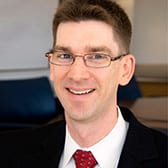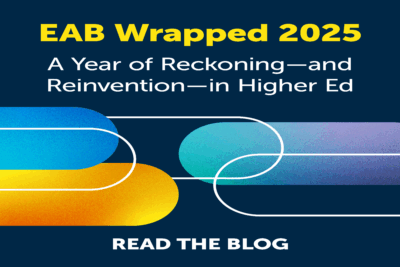With Memorial Day behind us, summer is officially here. In addition to the chance for a well-earned vacation and time to catch up on administrative work, these quieter months offer a great opportunity for reading and reflection. We’ve asked each of the researchers on the Higher Education Strategy Forum for their summer reading recommendations:
The Culture Code: The Secrets of Highly Successful Groups
by Daniel Coyle

Melanie Ho, General Manager, EAB Research
I oversee EAB’s research across all areas in higher education and spend a lot of time speaking with our members about the cultural challenges that span all types of issues and institutions.
Daniel Coyle’s book starts with the question “Why do certain groups add up to be greater than the sum of their parts, while others add up to be less?” Books and articles about culture are often too vague to be helpful, so I love that Doyle’s work draws on specific organizational examples (ranging from Pixar to Navy SEALs) as well as scholarly research.
The Surprising Power of Liberating Structures: Simple Rules to Unleash a Culture of Innovation
by Henri Lipmanowicz and Keith McCandless

David Attis, Managing Director, Strategic Research
In my role, I spend most of my time facilitating on-campus workshops. This book makes a powerful case that small changes in how people interact can produce significantly more impactful results. The authors describe 33 “liberating structures” that can be used to organize a broad range of meetings to empower all participants to create new possibilities. It succeeds in redefining the role of a great leader as someone who unleashes the creativity and intelligence of their teams.
The Art of Gathering by Priya Parker

Megan Adams, Practice Manager, Higher Ed Strategy Forum
As much as I think I spend my life in meetings, college and university presidents really are in back-to-back meetings all day long.
This is a book about meetings and how to use them to change the culture and direction of an organization. How do you define a meeting’s true purpose? What’s the right number of people to convene? How do you start? How do you end? (Spoiler alert: it’s not with logistics). Why does everyone crowd into the kitchen during a party? The answers to these questions make the difference between the daily slog of one-hour calendar invites and meetings that are energizing, electric, and productive.
The Uninhabitable Earth: Life After Warming
by David Wallace-Wells
 Rachel Tanner, Consultant
Rachel Tanner, Consultant
I’ll be honest: I usually stick to the fiction section for my summer reading, so this is not the kind of book I’m naturally drawn to. But it only took about 10 pages of reading for me to realize that it’s a must-read for anyone who, like me, spends a lot of time thinking about the future of higher ed.
From its first paragraph, this book is a litany facts, projections, and illustrations of what life on a warmer planet will look and feel like—what it already does look and feel like, most poignantly in countries like India and Saudi Arabia, from which American higher ed brings the bulk of our international students. This year’s spate of fires and floods on college campuses have given a very real preview of the future Wallace-Wells describes. Reading this book, it’s easy to see that weather-related incidents might quickly become the most common form of campus crisis.
Practical Wisdom: Thinking Differently about College and University Governance
by Peter D. Eckel and Cathy Trower
 Helen Sdvizhkov, Senior Analyst
Helen Sdvizhkov, Senior Analyst
Process management has always gotten me really excited. The gnarlier the process-related problem, the more time I spend on my commute, or while cooking dinner, or occasionally when out with friends (but don’t tell them that) trying to come up with fixes. It’s why a book on board management, as dry as that may sound to the average person, has become one of my favorite recent reads.
In Practical Wisdom, Eckel and Trower reevaluate standard approaches to university governance. They offer advice on how to make board meetings more effective and reframe common trustee questions by giving nuanced, not-so-common responses. The book’s practical frameworks, relatable anecdotes, and thought-provoking primer questions make it a worthwhile read for anyone who works on or with higher ed boards, especially college presidents.
Playing to Win: How Strategy Really Works
by A.G. Lafley and Roger L. Martin

Brian Schueler, Analyst
In my senior year, my university hired a new president. As student trustee on the hiring committee, I found myself thrust into a familiar philosophical debate between advocates for a president with a “practical” business background and those staunchly against the corporatization of higher education.
With that experience in mind, I approached this book both with interest and skepticism about how the lessons would apply to higher ed. On the surface, selling paper towels, skin cream, and laundry detergent has little in common with leading an institution of higher education. Yet A.G. Lafley, the former CEO of Proctor and Gamble, and Roger Martin, a strategy consultant, describe a decision-making process that has less to do with consumer goods as it does with setting a direction for large, complex organizations.
The book describes five essential questions to guide strategic choices and focuses on analyzing the necessary conditions for a strategy to succeed, rather than just the expected outcome. Both academic and business leaders could benefit from this perspective.
Multipliers: How the Best Leaders Make Everyone Smarter
by Liz Wiseman

Sarah Ferris, Director
Multipliers distinguishes leaders who are “Multipliers” from those who are “Diminishers” and offers the opportunity for leaders to optimize—and even expand—the potential of their teams. Drawing upon research and analysis from across industries, Wiseman outlines the behaviors of leaders who amplify the talents and capabilities of those around them to realize outsized impact. Presidents for whom this can learn specific tools and tactics for leading as a Multiplier in their own colleges and universities.
Helping Children Succeed: What Works and Why
by Paul Tough

Maggie Everett, Research Associate
Through my education policy master’s program, I’ve had the opportunity to read about issues spanning the education system, beyond just higher ed. This book uses outside perspectives, such as neurocognitive science and psychology, to explain how growing up in adversity affects soft skills and stress response development in K-12 students. It raises the alarm that the reward-and-punishment structure in many schools does little to motivate students coming from adverse home environments.
This is important to higher ed leaders as the wealth disparity widens and a larger proportion of students come from socioeconomically diverse backgrounds and universities must find ways to address the downstream effects of K-12 policies.
More Blogs

What our global partners asked us most in 2025

Is your yield rate okay?
